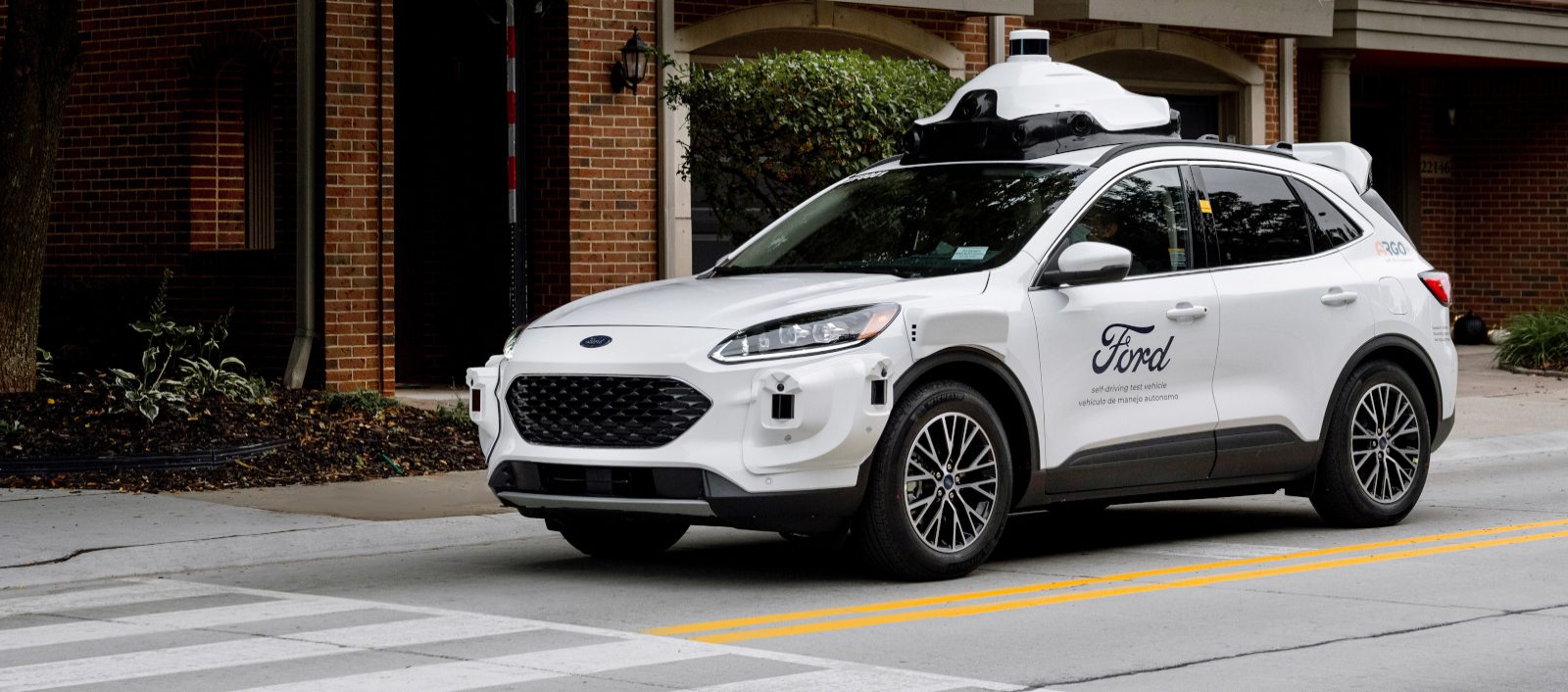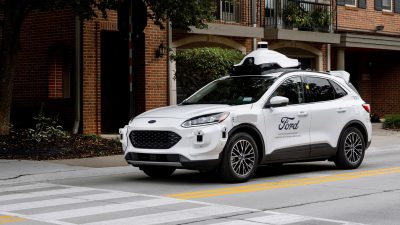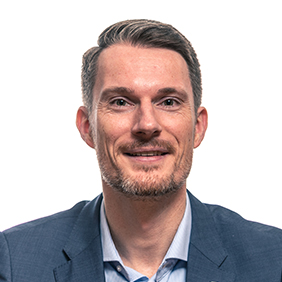- Ford en Argo AI beginnen deze maand aan vierde generatie test voor zelfrijdende voertuigen
- Nieuwe systemen nodig om commercialisering te ondersteunen en voor te bereiden op lancering
- Updates zijn hogere resolutie camera’s, betere sensors en accu’s en een verbeterd schoonmaaksysteem voor sensors
Een zelfrijdende dienst lanceren is complex. Veel verschillende aspecten moeten samenkomen om een betrouwbare en schaalbare zelfrijdende service te creëren die waarde biedt aan klanten en steden waarin de zelfrijdende voertuigen rijden. Bij Ford hebben we een doordachte aanpak van hoe we deze aspecten samenbrengen en zo de toekomst van zelfrijdende voertuigen vormgeven. Een belangrijk onderdeel van deze service is het voertuig.
Lees het bericht hieronder verder in het Engels:
Lees verder
Downloads
Meet the Fourth Generation Self-Driving Test Vehicle
Beginning to roll out this month, Ford and Argo AI‘s fourth-generation self-driving test vehicles are built on the Escape Hybrid platform and feature the latest advancements in sensing and computing technology. The Escape Hybrid is also the architecture and platform we have chosen to use to bring our autonomous vehicle service online.
What This Means for our Self-Driving Service
The systems we’re incorporating into our newest test vehicles are “launch-intent” in terms of the components we believe will be needed to support commercialization. What this means is that with a well-defined architecture and platform in the Escape Hybrid, our team can continuously test and refine performance over the coming years to better prepare us for launch. Everything we learn while using them can be channeled directly into our self-driving service as soon as it starts serving customers.
Here is a glimpse of the engineering advancements you’ll see on the new vehicles.
Getting a Sense for the Road
We have upgraded our sensing suite with even more advanced LiDAR, higher resolution cameras and more capable radar sensors.
- All-new long-range LiDAR with higher resolution, 128-beam sensing to help provide a 360-degree field of view.
- The addition of new near-field cameras and short-range LiDAR — looking ahead and to the side of the vehicle, while another is incorporated into a rear-facing sensing suite that keeps track of what’s going on behind the vehicle.
- Combined, this helps improve detection of fixed and moving objects on all sides of the Escape, providing a blind spot curtain, detecting things like a passing car or a bicyclist in a nearby bike lane.
Battery Power That Really Delivers
Powering these sensors, as well as our state-of-the-art computing systems is the increased electrification capability of the Escape Hybrid.
- The Escape Hybrid allows for improved integration and includes an underfloor liquid-cooled battery design.
- We’ve modified the Escape Hybrid’s high voltage battery with additional battery cells, which helps support the total battery power required by the self-driving system, while helping to reduce gasoline consumption.
Attention to Detail Sensor Cleaning
Over the last year, our team has refined the sensor cleaning system we developed based on on-road testing with our previous-generation test vehicles. Keeping our sensors clean from rain, dirt, debris and even insects is very important to ensure our vehicles can better “see” the world around them in a variety of challenging conditions.
- The team has developed hidden, forced-air cleaning chambers that surround the camera lenses and LiDAR sensors to ensure their field of view is clear while providing 360-degree cleaning coverage.
- We’ve increased the number of spray nozzles and coverage areas for improved liquid cleaning, and increased pressure to aid cleaning speed.
- Plus we’ve extended these new cleaning designs to our added near-field cameras and LiDAR sensors as well.
- With these enhancements and improved hydrophobic coatings, our latest test vehicles are much better equipped.
Why This Matters — How This Lays the Foundation for Our Business
- We have said it before, but the vehicle is just one part of bringing together the future of self-driving services.
- With our fourth-generation test vehicle, we have everything we need from a vehicle to stand up our self-driving service.
- In parallel, we continue to build, test and strengthen our fleet operations strategy, take a smart approach to finalizing our moving people and moving goods go-to-market strategies, build our customer experience and work with Argo AI towards our goal of developing an industry-leading self-driving system.
- We’re confident that we’re on the path to launching a safe, reliable and affordable service. And, we look forward to telling you more about how this service will ultimately help make people’s lives better.
What’s Next: As they become ready for deployment, we will gradually integrate these fourth-generation vehicles into our multi-city testing efforts alongside our Fusion Hybrids in Austin, Detroit, Miami, Palo Alto, Pittsburgh and Washington, D.C.




